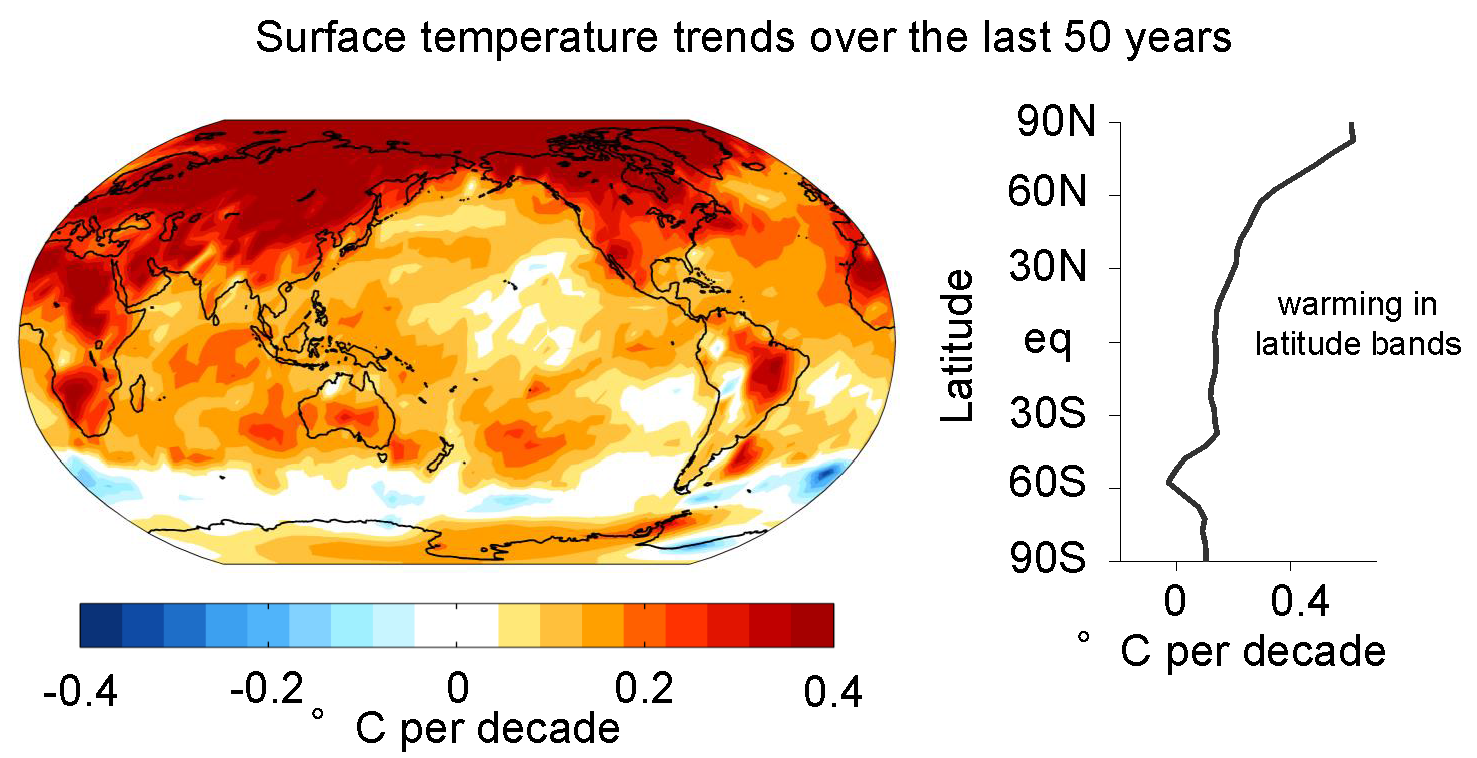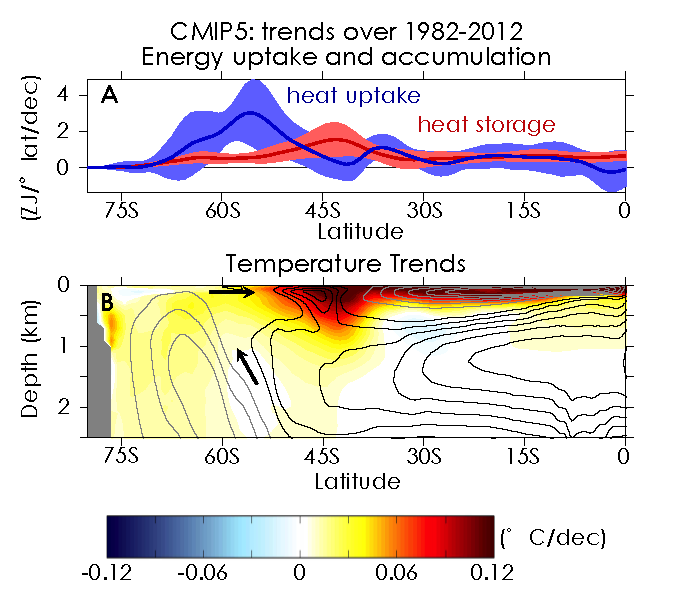Southern Ocean warming delayed by circumpolar upwelling and equatorward transport

The spatial pattern of temperature changes over the last several decades shows a pronounced contrast between the high latitudes of the two hemispheres; the Arctic warmed more than any other region on the planet, whereas the Southern Ocean adjacent to Antarctica has actually been cooling on average (Figure 1). Given the widespread evidence of increased greenhouse forcing and associated global energy imbalance (http://www.clivar.org/news/imperative-monitor-earth%E2%80%99s-energy-imbalance) resulting in energy accumulation in the climate system at the global scale, a key question is, why hasn’t the Southern Ocean warmed? Previous explanations of this climate paradox include:
1. deep mixed layers in the high-latitude Southern Ocean allowing heat taken up at the surface to be stored at depth,
2. increased surface westerly winds associated with ozone depletion resulting in stronger equatorward oceanic advection of cold water, or
3. surface freshening due to enhanced rainfall or glacial runoff resulting in less upward mixing of heat from warm sub-surface water.
A new study argues that the climatological ocean overturning circulation is responsible for delayed Southern Ocean warming. Circumpolar surface westerlies continually advect surface water equatorward and pull deep, old water -- which has not been exposed to the surface for centuries—up to the surface around Antarctica. As a result, as the surface waters of the high-latitude Southern Ocean are heated, they are continually advected equatorward and replaced by the deep, old water that has not been impacted by decades of anthropogenic climate forcing. Indeed, large quantities of energy are entering the high-latitude Southern Ocean, but this energy ends up accumulating in the water column in the lower-latitudes of the Southern Ocean, on the equatorward flank of the Antarctic Circumpolar Current (Figure 2). As a result, the high-latitude Southern Ocean will take centuries to warm despite the surface energy input, even in the absence of changing winds or freshwater sources.

Figure 1. Spatial pattern of surface temperature trends over the last 50 years (1965-2015) calculated from Cowtan and Way’s version of HadCRUT4

Figure 2. (A) 30 year trends of the ocean heat uptake (blue) and full-depth ocean energy accumulation (red) in historical CMIP5 simulations (1982-2012) -- units of ZJ per degree latitude band per decade. The shading indicates one standard deviation spread across the ensemble of models. (B) Depth-latitude cross section of temperature trends over the same period co-plotted with the climatological meridional overturning streamfunction (4 Sv contour interval) with sense of motion indicated by the black arrows.
Summary written by Aaron Donohoe
Southern Ocean warming delayed by circumpolar upwelling and equatorward transport (Nature Geoscience)
Kyle C. Armour1, John Marshall2, Jeffery R. Scott2&3, Aaron Donohoe4, Emily R. Newsom5
1 School of Oceanography and Department of Atmospheric Sciences, University of Washington, Seattle, Washington 98195, USA
2 Department of Earth, Atmospheric and Planetary Sciences, Massachusetts Institute of Technology, Cambridge, Massachusetts 02139, USA
3 Center for Global Change Science, Massachusetts Institute of Technology, Cambridge, Massachusetts 02139, USA
4 Polar Science Center, Applied Physics Laboratory, University of Washington, Seattle, Washington 98195, USA
5 Department of Earth and Space Sciences, University of Washington, Seattle, Washington 98195, USA
(Published online











Add new comment